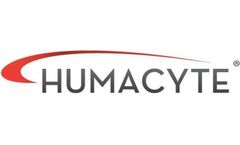In Vitro Study Articles & Analysis: Older
34 articles found
These studies often involve measuring biomarker levels, which serve as indicators of the biological response. ...
They exhibit high levels of keratinocyte markers, which are essential for maintaining the structural integrity and function of the corneal epithelium. These cells can be cultured in vitro, allowing researchers to study their behavior under controlled conditions. ...
Assessing these properties during drug development can help identify suitable candidates and optimize formulations. The Importance of In Vitro Studies In vitro studies offer a controlled environment to assess drug permeability without the ethical and complexity concerns associated with in vivo studies. ...
Macroautophagy is most extensively studied and best known among the three pathways. When macroautophagy is induced, an isolation membrane encloses a portion of cytoplasm, forming a characteristic double-membraned organelle called the autophagosome. ...
Furthermore, the nanoformulation platform includes in vitro and in vivo testing capabilities to evaluate the efficacy, safety, and stability of the nanoformulations. In vitro studies involve using cell cultures to test the drug release and cytotoxicity, while in vivo studies involve animal models to assess the biodistribution, ...
The process of iPSC differentiation to neurons and neuronal cells is of special importance for neurobiology and related disorders, considering the dearth of clinically relevant in vitro models available for research, drug screening and development, as well as the lack of therapy to reverse neuronal damage. Benefits and advantages of iPSC differentiation to neural stem cells ...
In the vast and intricate world of biology, the development of proteins and antibodies stands as a crucial field of study, driving advancements in medicine, biotechnology, and beyond. From the fundamental building blocks of life to the complex molecules that defend our bodies, these remarkable biomolecules hold the key to unlocking new frontiers in scientific understanding and ...
Furthermore, their ability to infect both immortalized and primary cells significantly broadens their scope of use in vitro and in vivo studies. Concept of Reporter Lentiviral Particles Reporter lentiviral particles carry the technology a step further by including a reporter gene in the viral vector. ...
Although in vivo assays provide more comprehensive information, in vitro DMPK studies are less expensive, have shorter turnaround times, and are considered more ethical as they reduce animal usage in pharmaceutical research. ...
Pooled Human Cryopreserved Hepatocytes In drug development, primary human hepatocytes are the most suitable system for uptake, metabolism, clearance, hepatotoxicity, drug-drug interaction, and other preclinical in vitro studies. We have fresh, cryopreserved, and immortalized lines available. Animal Hepatocytes Primary animal hepatocytes provide a cost-effective ...
Although in vivo assays provide more comprehensive information, in vitro DMPK studies are less expensive, have shorter turnaround times, and are considered more ethical as they reduce animal usage in pharmaceutical research. ...
They help bridge the gap between in vitro studies and clinical trials, allowing researchers to gain a better understanding of how a drug behaves in a living organism. ...
Epigenetic changes have been shown to drive cancer phenotypes in concert with genetic alterations. For example, in vitro studies have found that the DNA methylation inhibitor (5-aza-2'-deoxycytidine) in combination with vitamin C administration synergistically inhibits proliferation and increases apoptosis by enhancing endogenous retroviral (ERV) demethylation. ...
Furthermore, oxygen diffusion limitations can be magnified when islet numbers are increased dramatically, as in translating from rodent studies to human-scale treatments. To address these limitations, an islet transplantation approach using an acellular vascular graft as a vascular scaffold has been developed, termed the BioVascular Pancreas (BVP). ...
The RepliGut® platform also presents a unique opportunity to provide a more relevant in vitro model with non-human cells. In vitro animal models would drastically reduce the need for in vivo animal studies for human drug development, as well as provide an invaluable tool as for the development of agricultural and veterinary medicines. In ...
Probiotics represent a low-cost, large-scale alternative solution to prevent or reduce Helicobacter pylori colonization. Based on in vitro studies of host intestinal epithelial or immune cell responses to probiotic strains, several mechanisms have been hypothesized. ...
Researchers from IRCCS Istituto Ortopedico Rizzoli and Indian Institute of Technology, Delhi (IIT) used their REGENHU bioprinters to fabricate an in vitro phenotypically stable engineered articular cartilage by embedding human bone marrow-derived stromal cells (hMSCs) in a cell-laden silk fibroin–gelatin (SF-G) bioink. The bioprinted constructs allowed the in ...
ByRegenhu
Some immortalized or cancerous cell lines, such as Caco-2 cells, are relatively simple to use and enable studies to be conducted fairly quickly. But the translatability of the data from in vitro to in vivo is always a question, especially since these are cancerous rather than normal cells. ...
Studies shows that silymarin may help with the regeneration of liver cells, decrease inflammation and protect liver cells from damage in an antioxidant type mannerriiil « Read: Study shows FucoVital to be more effective than silvmarin in preventing harmful fat accumulation in liver cells » Artichoke Artichoke has been used in traditional medicine for ...
ByAlgatech
Despite decades of research, the mechanisms of NAFLD progression, therapeutic approaches and non-invasive diagnostics are still resoundingly absent. The study of steatosis and NASH has traditionally utilized rodent models, which are time consuming to generate and do not fully recapitulate the complex phenotypes associated with the human disease. ...











